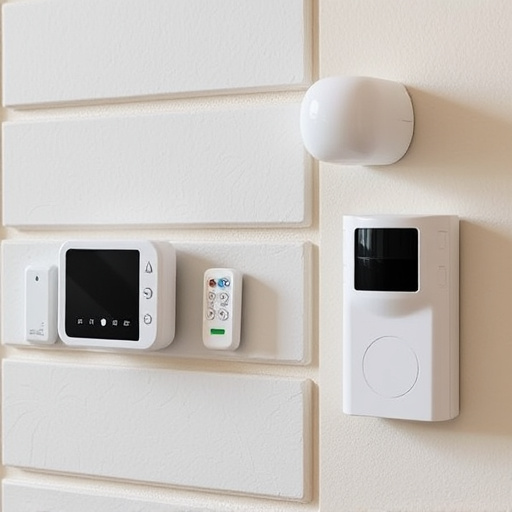DIY home alarms are gaining popularity for their cost-effectiveness and flexibility in securing living spaces. These systems include basic components like motion sensors and door/window contacts, triggering alerts via sirens or smartphone notifications. Benefits include customization, easy installation, remote monitoring, and swift response to potential threats. An effective system integrates high-quality cameras, smart home automation, and a central control panel with fire and carbon monoxide detectors for comprehensive protection. Setting up requires strategic planning, choosing tailored sensors, optimizing settings through the app, and regular testing for peak performance.
“Enhance your home’s security with the power of DIY! This comprehensive guide explores the world of DIY home alarm systems, empowering you to take control of your safety. From understanding the basics and unravelling benefits to mastering system setup, we cover all aspects. Learn about essential components, optimal placement, and tips for maximising protection. Whether you’re a tech-savvy enthusiast or simply seeking added peace of mind, this article is your key to unlocking a secure home environment using DIY home alarms.”
Understanding DIY Home Alarms: The Basics and Benefits
DIY home alarms have become increasingly popular as people seek cost-effective and flexible ways to secure their living spaces. These systems empower homeowners with the ability to take control of their safety, offering a sense of peace of mind. The basic components typically include sensors, alerts, and monitoring options. Sensors detect unusual activities or movements, triggering alerts that can be in the form of loud sirens, notifications to your smartphone, or both. This real-time notification system is a significant advantage, allowing you to respond swiftly to potential threats.
The benefits of DIY home alarms are numerous. They offer convenience and customization, as users can tailor the system to their specific needs and preferences. Installation is usually straightforward, eliminating the need for professional services and saving costs. Additionally, these systems often provide remote monitoring through apps, enabling you to keep an eye on your home from anywhere. This flexibility and control make DIY alarms an attractive option for those looking to enhance their home’s security without breaking the bank.
Components of an Effective DIY Security System
An effective DIY home security monitoring system combines several key components for comprehensive protection. At its core, a reliable DIY home alarms system includes motion sensors and door/window contacts that trigger alerts when unauthorized access is detected. These sensors should be placed strategically around entry points and areas prone to intrusion. Additionally, high-quality cameras with night vision capabilities offer visual confirmation of any alerts, allowing you to identify potential threats remotely.
To enhance the system’s effectiveness, consider integrating smart home automation features like remote control via smartphone apps. This enables you to monitor your property from anywhere, set automated rules for lights and appliances, and receive instant notifications when unusual activities occur. A central control panel also acts as a hub, allowing easy disarming and arming of the system, while integrating with other security devices like fire and carbon monoxide detectors for a more robust safety network.
Setting Up and Optimizing Your DIY Home Alarm System
Setting up a DIY home alarm system can seem daunting, but with careful planning and optimization, it becomes an accessible and effective way to enhance your security. Begin by assessing your home’s layout and identifying potential weak points—windows, doors, or less visible areas. Choose sensors that cater to these specific needs; motion detectors for bustling areas, glass break sensors for vulnerable windows, and door/window contacts for entrances. Place them strategically, ensuring full coverage without creating an unsightly mess.
Once installed, optimize your system through the accompanying app. Configure automated settings like arming the alarm at set times or when you leave certain zones. Utilize remote access to monitor your home from anywhere, receive instant alerts for any triggered sensors, and control lighting or thermostats remotely. Regularly test your system and update firmware to maintain peak performance and ensure peace of mind.
